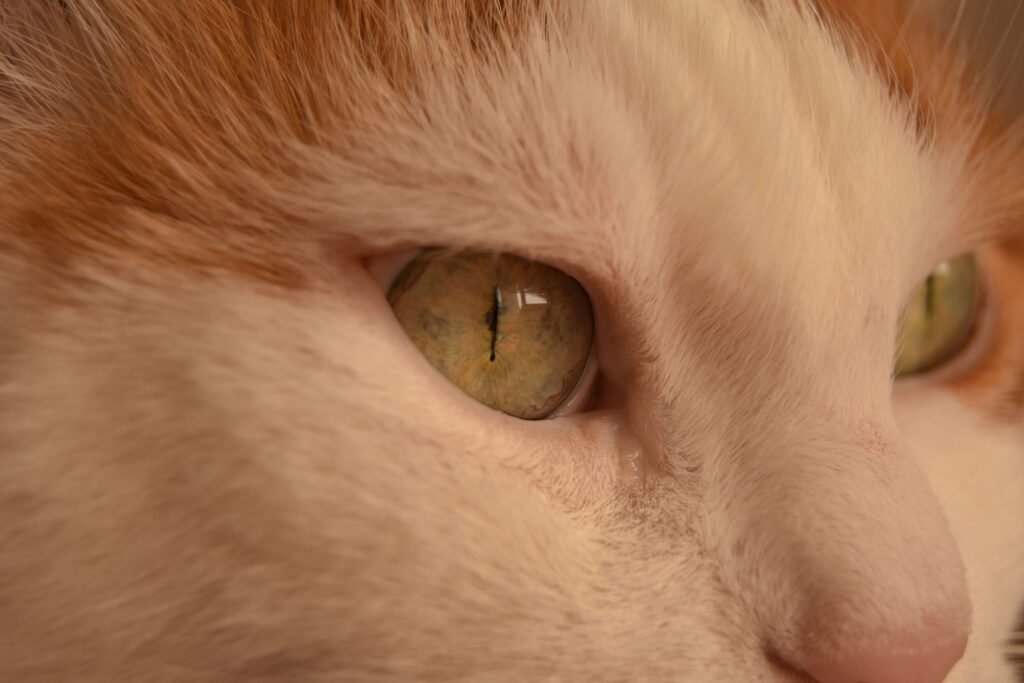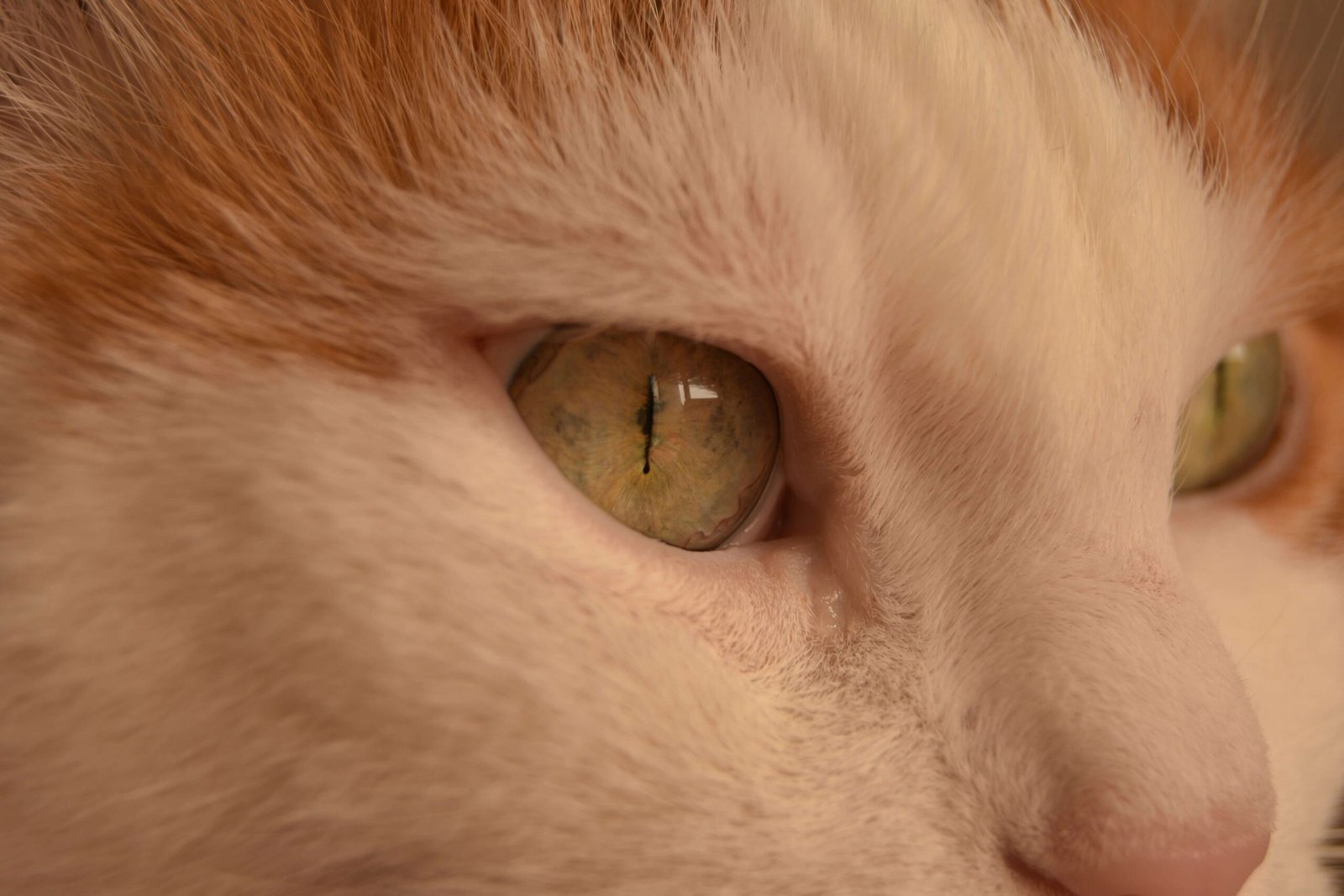Decoding the Cat Pupil Meaning: What Your Feline’s Eyes Are Telling You
Cats are mysterious and captivating creatures, and their eyes often seem like windows into their souls. One of the most intriguing aspects of a cat’s eyes is their pupils—the black, adjustable openings at the center of their irises. A cat’s pupils can change shape and size in response to various stimuli, revealing a wealth of information about their mood, health, and intentions. Understanding the meaning behind these changes can deepen your bond with your feline companion and help you better interpret their behavior.
In this blog post, we’ll explore the fascinating world of cat pupil meaning, covering everything from emotional cues to potential health concerns. By the end, you’ll be equipped to decode what your cat’s eyes are trying to tell you.
What Do Different Pupil Shapes Indicate?
A cat’s pupils can appear in a variety of shapes and sizes, each conveying different messages about their emotional state or physical condition. Here’s a breakdown of common cat pupil shapes and their meanings:
Dilated Pupils (Large and Round)
Dilated pupils often indicate excitement, curiosity, or fear. Cats may exhibit this when they’re playing, hunting, or feeling startled by something in their environment.Constricted Pupils (Small and Thin)
Constricted pupils usually suggest aggression, tension, or irritation. If your cat feels threatened or annoyed, their pupils may narrow as part of their defensive response.Vertical Slits (Normal in Bright Light)
In bright environments, a cat’s pupils naturally narrow into vertical slits. This is a normal reaction to regulate the amount of light entering their eyes.Oval-Shaped Pupils
Oval-shaped pupils can signal focus or alertness. Cats often display this shape when they’re observing something interesting, such as a bird outside the window.Uneven or Misshapen Pupils
If one pupil appears larger or differently shaped than the other, it could indicate an underlying health issue, such as an injury, infection, or neurological problem.
Understanding these variations in pupil shape can help you gauge your cat’s emotions and identify any potential issues that may require attention. Always observe your cat’s overall behavior alongside their eye changes for a clearer picture of their well-being.
How Environmental Factors Influence Cat Pupil Size
A cat’s pupils don’t just reflect their emotions—they also respond to external stimuli. Environmental factors play a significant role in determining how wide or narrow a cat’s pupils become. Here’s how different situations can impact your cat’s pupil size:
Bright Light Exposure
In well-lit environments, a cat’s pupils will constrict to protect their sensitive retinas from excessive light. This is a natural and healthy response.Low Light or Darkness
In dim lighting, a cat’s pupils will dilate to allow more light into their eyes, enhancing their ability to see in the dark. This adaptation is one reason cats are such skilled hunters at night.Sudden Movements or Sounds
Unexpected noises or quick motions can cause a cat’s pupils to dilate as part of their fight-or-flight response. This prepares them to react swiftly to potential threats.Temperature Changes
Extreme temperatures, especially cold ones, can sometimes cause temporary changes in pupil size as the body adjusts to environmental stress.Interaction with Humans or Other Animals
During playtime or confrontations, a cat’s pupils may fluctuate based on their level of engagement or stress. Observing these changes can provide insights into their comfort level.
By paying attention to how your cat’s pupils respond to their surroundings, you can gain a deeper understanding of their sensory experiences and adapt your interactions accordingly. Remember, context is key when interpreting pupil changes.
Check this guide 👉Understanding Brown Cat Eye Discharge: Best 7 Health Tips!
Check this guide 👉Cat Eye Hemorrhage: Best 7 Expert Tips!
Check this guide 👉Cat Eye Infections and Natural Remedies: Best 7 Expert Tips!

Factors Influencing Pupil Size | Possible Meanings |
|---|---|
Bright light | Natural constriction for light regulation |
Dim or dark environments | Dilation to improve night vision |
Sudden loud noises | Fear or heightened alertness |
Aggressive encounters | Constriction linked to tension |
Playful or curious behavior | Excitement leading to dilation |
Health Concerns Linked to Abnormal Pupil Behavior
While occasional changes in pupil size are normal, persistent or unusual patterns can sometimes indicate underlying health problems. Here are some signs to watch out for:
Persistent Dilation
If your cat’s pupils remain dilated even in normal lighting conditions, it could point to pain, illness, or neurological issues.Persistent Constriction
Constantly constricted pupils might suggest discomfort, irritation, or an issue with the eye itself, such as glaucoma.Unequal Pupil Sizes (Anisocoria)
When one pupil is significantly larger or smaller than the other, it could be a sign of trauma, infection, or a neurological disorder.Cloudy or Discolored Eyes
Changes in eye color or clarity accompanied by abnormal pupil behavior may indicate cataracts, infections, or other ocular diseases.Rapid Pupil Fluctuations
If your cat’s pupils rapidly shift between dilation and constriction without apparent cause, it could be a symptom of seizures or nerve damage.
If you notice any of these symptoms, consult a veterinarian promptly to rule out serious conditions. Early intervention can make all the difference in preserving your cat’s health and quality of life.
Tips for Observing and Interpreting Cat Pupil Changes
To better understand your cat’s pupil behavior, it’s important to observe them consistently and in context. Here are some tips to help you interpret their eye language effectively:
Watch for Patterns Over Time
Keep a mental or written record of how your cat’s pupils behave in specific situations. This will help you recognize deviations from their norm.Consider the Context
Always take into account the environment and your cat’s overall demeanor. A single observation may not tell the full story.Look for Accompanying Signs
Pay attention to other body language cues, such as ear position, tail movement, and vocalizations, to get a complete picture of your cat’s state.Avoid Forcing Interaction
If your cat seems stressed or uncomfortable, give them space. Forcing interaction can escalate negative emotions and confuse your observations.Consult a Professional When Unsure
If you’re ever uncertain about what your cat’s pupils are telling you, seek advice from a veterinarian or animal behaviorist.
With patience and attentiveness, you’ll become adept at reading your cat’s eyes and strengthening your connection with them.
Behavioral Cues Accompanying Pupil Changes
While observing your cat’s pupils is insightful, their behavior often provides additional context to interpret their emotional state. Here are some common behaviors that may accompany specific pupil changes:
Tail Flicking or Twitching
If your cat’s pupils are dilated and their tail is flicking rapidly, it could indicate agitation or irritation.Ears Flattened Backward
Dilated pupils paired with flattened ears often signify fear or defensiveness. This combination suggests your cat feels threatened.Slow Blinking
When your cat’s pupils are relaxed (neither fully dilated nor constricted) and they slowly blink at you, it’s a sign of trust and affection.Hissing or Growling
Constricted pupils alongside hissing or growling usually point to aggression or discomfort. Your cat may be trying to assert dominance or protect themselves.Purring with Dilated Pupils
If your cat is purring but has dilated pupils, they may be experiencing mixed emotions—such as excitement combined with nervousness.
By combining observations of pupil changes with these behavioral cues, you can gain a more holistic understanding of your cat’s feelings and respond appropriately.
Environmental Adjustments to Support Your Cat
Creating a safe and comfortable environment for your cat can help reduce stress and minimize unusual pupil behavior. Here are some adjustments you can make:
Provide Hiding Spaces
Cats feel safer when they have access to cozy hiding spots, such as covered beds or boxes. These spaces can help them relax during stressful situations.Use Calming Scents
Incorporating calming scents like lavender or synthetic pheromones (e.g., Feliway) can soothe anxious cats and promote relaxation.Maintain Consistent Lighting
Avoid sudden changes in lighting levels, as they can trigger unnecessary pupil adjustments. Gradual transitions are easier on your cat’s eyes.Limit Loud Noises
Minimize exposure to loud or abrupt sounds, which can startle your cat and cause their pupils to dilate excessively.Offer Interactive Playtime
Engaging your cat in regular play sessions helps release pent-up energy and reduces stress-related behaviors.
These small adjustments can go a long way in creating a harmonious living space where your cat feels secure and content.
Signs Your Cat May Need Veterinary Attention
While many pupil changes are harmless, certain signs warrant immediate veterinary attention. Here are red flags to watch for:
Unexplained Pupil Dilation Lasting Hours
If your cat’s pupils remain abnormally dilated for an extended period without an obvious reason, it could indicate pain or illness.Sudden Blindness or Disorientation
A cat walking aimlessly, bumping into objects, or showing confusion along with unusual pupil behavior may be experiencing vision loss.Excessive Eye Discharge
Yellow or green discharge around the eyes accompanied by abnormal pupil size could signal an infection or injury.Swollen or Red Eyes
Inflammation or redness around the eyes paired with irregular pupils may point to trauma or a serious condition like uveitis.Behavioral Changes Alongside Pupil Issues
If your cat becomes unusually lethargic, aggressive, or withdrawn while exhibiting strange pupil patterns, it’s time to consult a vet.
Promptly addressing these warning signs can prevent complications and ensure your cat receives timely treatment. Always prioritize professional advice when in doubt.
FAQ
Why do my cat’s pupils change size so often?
A cat’s pupils change size in response to light levels, emotions, and environmental stimuli. This is a natural and adaptive process.
Are dilated pupils always a sign of fear?
Not necessarily. Dilated pupils can also indicate excitement, curiosity, or anticipation. Context matters when interpreting their meaning.
Can abnormal pupil behavior indicate illness?
Yes, persistent or unusual pupil changes may signal health issues. Consult a vet if you notice anything concerning.
Is it normal for one pupil to be larger than the other?
No, unequal pupil sizes (anisocoria) can indicate an injury, infection, or neurological problem. Seek veterinary care immediately.
How can I tell if my cat’s pupils are reacting normally?
Observe your cat in different lighting conditions and situations. Normal reactions include constriction in bright light and dilation in dim light.
Final Thoughts: Unlocking the Secrets of Your Cat’s Eyes
A cat’s eyes are truly remarkable, offering a glimpse into their inner world and providing valuable clues about their well-being. By understanding the meaning behind their pupil changes, you can enhance your relationship with your feline friend and ensure they receive the care they need. Whether it’s deciphering their emotions, monitoring their health, or simply marveling at their unique behaviors, paying attention to your cat’s eyes is a rewarding experience. Remember, every blink, dilation, and constriction tells a story—so keep observing, stay curious, and cherish the moments you share with your beloved companion.
Canned Pumpkin for Cat Diarrhea: Best 7 Expert Tips! Natural remedy to firm stools, soothe upset bellies, and support gut health safely.
Can a Cat Give You Scabies? Best 7 Expert Tips! Discover the truth about feline mites, human skin risks, and how to protect yourself—without panic.
Cat Flea vs Human Flea: Best 7 Expert Tips! Discover the truth about bites, species, and how to eliminate infestations for good.
Weird Cat Behaviors: Best 7 Expert Tips! Discover why cats do strange things—and how to understand, not punish, their instincts for a happier home.





